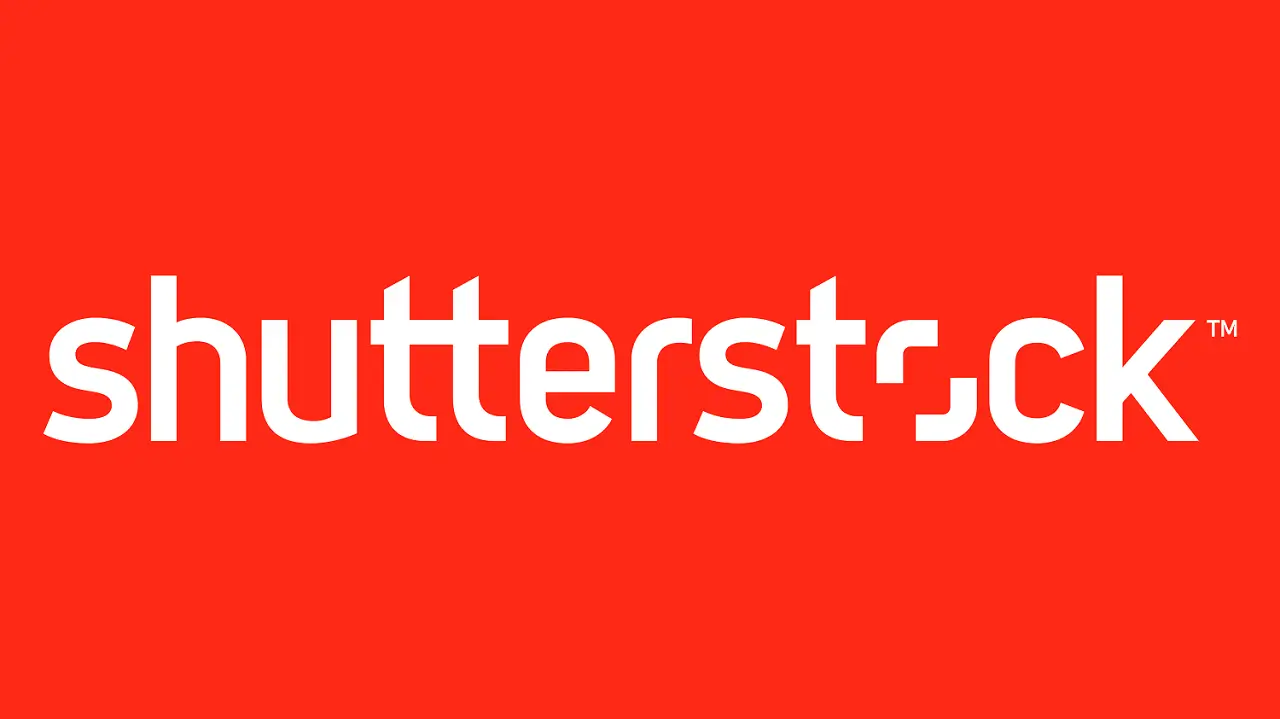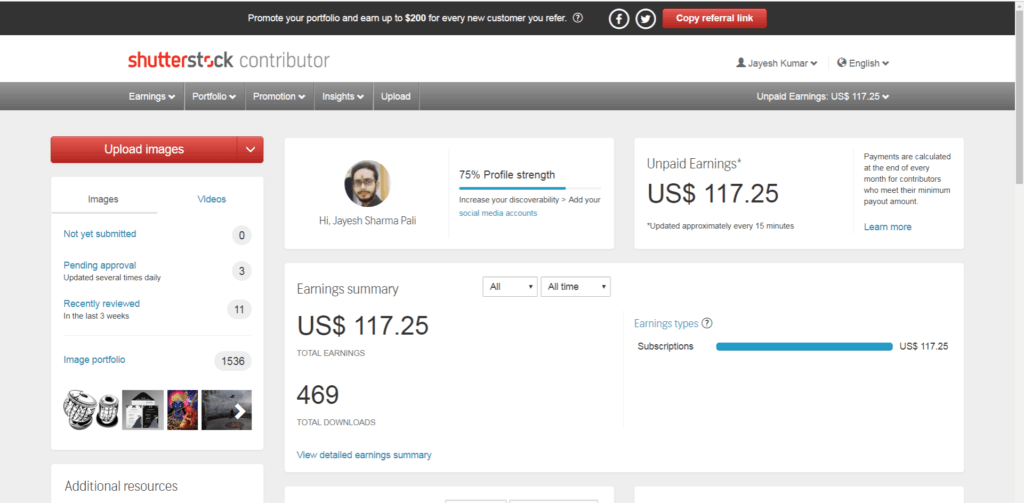1. Introduction
Welcome to the world of creative entrepreneurship! This section provides an overview of how individuals can monetize their artistic talents by selling their work on Shutterstock. Discover the potential for turning your passion into a profitable venture and learn the fundamental steps to get started on this exciting journey.
Also Read This: Importing Adobe Stock into Photoshop for Your Projects
2. Getting Started with Shutterstock

Embark on your creative journey by establishing a presence on Shutterstock – a leading platform for selling digital content. Follow these steps to set up your account and kickstart your monetization process:
- Create an Account: Visit the Shutterstock website and sign up for a creator account. Provide necessary details, including your email address and password. This account will serve as your gateway to showcasing and selling your creative work.
- Profile Setup: Personalize your profile to make it stand out. Add a captivating bio, showcase your artistic background, and upload a profile picture to connect with potential buyers on a more personal level.
- Understand Submission Guidelines: Familiarize yourself with Shutterstock's submission guidelines to ensure your content meets the platform's standards. This includes adhering to image quality, format, and copyright requirements.
- Upload Your First Content: Begin by uploading a few high-quality samples of your work. This can include photographs, illustrations, vectors, or videos. Each submission should showcase your unique style and creativity.
Once your account is set up, it's time to navigate the platform efficiently. Explore the user-friendly interface, and take advantage of features like:
- Dashboard Overview: Get familiar with the dashboard, where you can manage your portfolio, track sales, and gain insights into your audience.
- Submission History: Keep track of your content submissions and their status through the submission history section. This helps you stay organized and informed about the acceptance status of your work.
- Communication Channels: Utilize Shutterstock's communication channels, such as forums and community boards, to connect with fellow creators, share experiences, and gather valuable insights.
Remember, a well-organized and visually appealing profile enhances your chances of attracting potential buyers. Invest time in creating a portfolio that reflects the breadth and depth of your creative capabilities.
Also Read This: Creating a Brochure in Adobe Stock with High-Quality Stock Photos
3. Creating High-Quality Content

Producing exceptional content is the cornerstone of success on Shutterstock. Elevate your creative output with these strategies to ensure your work stands out among the vast array of offerings:
- Define Your Niche: Identify a specific niche or theme for your content. This could range from nature photography to digital illustrations. A defined niche helps you target a specific audience and build a recognizable brand.
- Invest in Quality Equipment: Whether you're a photographer, graphic designer, or videographer, having the right tools is crucial. Invest in high-quality cameras, software, and equipment to enhance the overall quality of your work.
- Focus on Composition: Pay attention to the composition of your images or designs. Utilize principles such as the rule of thirds, leading lines, and symmetry to create visually appealing and balanced content.
- Optimize for Shutterstock Standards: Familiarize yourself with Shutterstock's content guidelines. Ensure your images meet technical specifications, including resolution, format, and color accuracy, to increase the likelihood of acceptance.
Additionally, consider creating a diverse portfolio that caters to different needs and preferences. Include a mix of styles, subjects, and formats to appeal to a broader audience. To further enhance your content, employ the following techniques:
| Technique | Description |
|---|---|
| Editing Skills | Enhance your images or videos with proficient editing skills. Use software tools to refine colors, remove imperfections, and add creative effects. |
| Keyword Research | Conduct thorough keyword research to understand popular search terms. Incorporate relevant keywords in your content to improve its discoverability on the platform. |
Remember, the goal is not just to create content but to create content that resonates with your target audience and meets the standards set by Shutterstock. By consistently delivering high-quality work, you increase your chances of attracting buyers and generating revenue.
Also Read This: How to Make Sausages in a Factory Industrial Process Explained
4. Understanding Keywords and Metadata
Unlock the potential of your creative work by mastering the art of keywords and metadata. These elements play a crucial role in making your content discoverable and attracting the right audience on Shutterstock. Here's a comprehensive guide on how to leverage keywords and metadata effectively:
- Research Relevant Keywords: Before uploading your content, conduct thorough research on keywords related to your niche. Identify terms that potential buyers are likely to use when searching for specific types of content.
- Use Descriptive Language: Write concise and descriptive titles, captions, and tags for your content. Clearly convey the theme, subject, and mood of your work to provide buyers with accurate information.
- Utilize Synonyms and Variations: Expand your reach by incorporating synonyms and variations of keywords. This ensures that your content is visible to a broader audience with diverse search preferences.
- Avoid Overuse of Keywords: While keywords are essential, avoid overloading your content with them. Maintain a balance to ensure that your titles and descriptions read naturally and are appealing to both buyers and search algorithms.
Understanding metadata is equally crucial. Metadata includes additional information about your content, such as the date of creation, location, and relevant categories. Consider the following tips for optimizing metadata:
| Tip | Details |
|---|---|
| Complete Metadata Fields | Fill in all available metadata fields provided by Shutterstock. This comprehensive information provides buyers with a deeper understanding of your content. |
| Stay Consistent | Maintain consistency in metadata across your portfolio. This helps build a cohesive brand and makes it easier for buyers to identify and recognize your work. |
By strategically incorporating relevant keywords and optimizing metadata, you increase the visibility of your content on Shutterstock. This not only attracts potential buyers but also enhances the overall discoverability of your creative portfolio.
Also Read This: Do I Get ESPN Plus with YouTube TV and What Sports Channels Are Included
5. Pricing Your Work Strategically
Setting the right price for your creative work on Shutterstock is a crucial aspect of maximizing your earnings and attracting potential buyers. Follow these strategic pricing guidelines to ensure your content is not only competitive but also reflective of its true value:
- Evaluate Market Trends: Stay informed about market trends within your creative niche. Understand the pricing structures of similar content to gauge the competitive landscape and set your prices accordingly.
- Consider Content Type: Different types of content may warrant different pricing strategies. Evaluate the effort, time, and resources invested in creating your content, whether it's a high-resolution photograph, intricate illustration, or captivating video.
- Factor in Licensing: Determine the licensing options for your content. Shutterstock offers various licensing models, including royalty-free and rights-managed. Adjust your pricing based on the licensing terms to align with buyer expectations and usage scenarios.
- Offer Special Promotions: Attract attention to your portfolio by occasionally offering special promotions or discounts. This can stimulate sales, especially for new or highlighted content, and encourage buyers to explore your complete collection.
Understanding the balance between competitive pricing and the value of your creative work is essential. Consider these additional strategies to optimize your pricing:
| Strategy | Details |
|---|---|
| Tiered Pricing | Implement tiered pricing based on the resolution or quality of your content. This allows buyers to choose options that best fit their needs and budget. |
| Monitor Performance | Regularly review the performance of your content and adjust pricing based on its popularity and demand. Be responsive to market dynamics to stay competitive. |
Remember, finding the right balance between competitive pricing and the perceived value of your creative assets is key. By adopting a strategic approach to pricing, you not only enhance your earning potential but also attract a wider range of buyers to appreciate and purchase your work on Shutterstock.
Also Read This: Mastering Nail Art Brushes for Intricate Designs
6. Promoting Your Portfolio
Effectively promoting your creative portfolio is crucial for gaining visibility, attracting potential buyers, and increasing sales on Shutterstock. Explore these actionable strategies to elevate your promotional efforts:
- Utilize Social Media Platforms: Leverage the power of social media to showcase your work. Share snippets, behind-the-scenes content, and updates about your portfolio on platforms like Instagram, Facebook, Twitter, and Pinterest. Engage with your audience and encourage them to visit your Shutterstock portfolio.
- Create a Personal Website: Establishing a personal website serves as a centralized hub for your creative endeavors. Showcase your best work, provide insights into your artistic process, and include direct links to your Shutterstock portfolio for seamless navigation.
- Collaborate with Influencers: Identify influencers or bloggers within your creative niche and explore collaboration opportunities. Influencers can introduce your work to their audience, providing valuable exposure and potentially driving traffic to your Shutterstock portfolio.
- Participate in Online Communities: Join relevant online communities, forums, and groups where potential buyers and fellow creators gather. Actively participate in discussions, share your experiences, and subtly promote your Shutterstock portfolio when appropriate.
Enhance your promotional strategy with these additional tips:
| Tip | Details |
|---|---|
| Email Marketing | Build an email list of interested individuals and periodically send newsletters featuring your latest content, promotions, and updates. Email marketing provides a direct channel to engage with your audience. |
| Optimize Keywords for Social Media | Include relevant keywords and hashtags in your social media posts to improve discoverability. This increases the chances of your content reaching a broader audience interested in your niche. |
Consistent and strategic promotion is essential for building a robust online presence. By actively engaging with various promotional channels, you can expand your reach, connect with a diverse audience, and ultimately drive more traffic to your Shutterstock portfolio, increasing the likelihood of sales and success.
Also Read This: How to Embed YouTube Videos in Synergy LMS Assignments
7. Handling Licensing and Copyright
Understanding licensing and protecting your intellectual property is crucial when selling creative content on Shutterstock. Navigate the complexities of licensing agreements and safeguard your work with these essential considerations:
- Comprehend Licensing Models: Familiarize yourself with the various licensing models available on Shutterstock. Common models include royalty-free and rights-managed licenses. Understand the usage rights granted to buyers under each model to make informed decisions about how your content can be utilized.
- Set Clear Licensing Terms: Clearly outline the licensing terms for your content in the metadata and descriptions. Specify whether the content is available for commercial or editorial use and provide any restrictions or limitations. Transparency builds trust with buyers and helps prevent misuse.
- Monitor License Compliance: Regularly monitor the use of your licensed content to ensure compliance with the agreed-upon terms. Utilize the tracking features on Shutterstock and promptly address any instances of unauthorized use or infringement.
- Understand Exclusive vs. Non-Exclusive: Decide whether you want to offer your content exclusively on Shutterstock or make it available on other platforms as well. Exclusivity may provide additional benefits, but it's essential to weigh the advantages against the potential limitations.
Further strengthen your understanding of licensing and copyright with these best practices:
| Best Practice | Details |
|---|---|
| Register Your Copyright | Consider registering your copyright with the relevant authorities. While copyright protection is automatic, registration provides additional legal benefits and protections in case of infringement. |
| Offer Custom Licensing | Consider offering custom licensing options for buyers with specific needs. This flexibility can attract a wider range of clients and potentially lead to more lucrative opportunities. |
By proactively managing licensing and copyright aspects of your creative work, you not only protect your intellectual property but also foster a secure and trustworthy environment for both you and your buyers on Shutterstock.
Also Read This: How You Can Make Money as a Shutterstock Contributor
8. Navigating the Analytics Dashboard
Unlock the power of data-driven insights by effectively navigating the analytics dashboard on Shutterstock. Understanding the metrics and data provided can empower you to optimize your creative strategy, track performance, and enhance your overall success on the platform. Here's a guide on how to navigate the analytics dashboard:
- Accessing the Dashboard: Upon logging into your Shutterstock creator account, locate and access the analytics dashboard. This centralized hub provides a comprehensive overview of your portfolio's performance, sales, and audience engagement.
- Overview of Key Metrics: Familiarize yourself with key metrics displayed on the dashboard, such as views, downloads, and earnings. These metrics offer valuable insights into the popularity of your content and the financial success of your portfolio.
- Tracking Content Performance: Use the analytics dashboard to track the performance of individual pieces of content. Identify best-selling items, analyze trends, and understand which types of content resonate most with your audience.
- Understanding Audience Demographics: Explore demographic data to gain insights into the geographic locations and characteristics of your audience. This information can inform your content strategy and help tailor your creations to the preferences of your target audience.
Enhance your analytics navigation with these advanced features:
| Feature | Details |
|---|---|
| Time-Based Analysis | Utilize time-based filters to analyze the performance of your portfolio over specific periods. Identify trends, seasonal variations, and the impact of promotional efforts on your content. |
| Referral Source Tracking | Explore referral source data to understand where your audience discovers your content. This can help you optimize promotional strategies and focus on channels that drive the most traffic. |
Regularly review and analyze the data provided by the analytics dashboard to make informed decisions about your content strategy. By leveraging these insights, you can refine your approach, tailor your content to audience preferences, and maximize your earnings on Shutterstock.
Also Read This: Redeeming a Code for YouTube Premium – Everything You Should Know
FAQ
Explore answers to frequently asked questions about monetizing creativity and selling on Shutterstock. If you have inquiries that aren't addressed here, feel free to reach out to Shutterstock's support for personalized assistance.
-
- Q: How do I get started on Shutterstock?
A: To begin, sign up for a creator account on the Shutterstock website. Complete your profile, adhere to submission guidelines, and start uploading your high-quality creative content.
-
- Q: What types of content are accepted on Shutterstock?
A: Shutterstock accepts a variety of content, including photographs, illustrations, vectors, and videos. Ensure your submissions meet the platform's quality and format standards.
-
- Q: How should I price my creative work?
A: Consider market trends, content type, and licensing models when setting prices. Evaluate the competitive landscape and periodically review your pricing based on content performance.
-
- Q: What is the difference between royalty-free and rights-managed licenses?
A: Royalty-free allows buyers to use the content multiple times without additional payments, while rights-managed provides more control over usage terms and exclusivity. Understand the implications before choosing a licensing model.
-
- Q: How can I promote my Shutterstock portfolio?
A: Promote your portfolio through social media, create a personal website, collaborate with influencers, participate in online communities, and consider email marketing. Diversify your promotional efforts for maximum exposure.
-
- Q: What steps should I take to protect my intellectual property?
A: Clearly define licensing terms, monitor usage compliance, and consider registering your copyright. Choose between exclusive and non-exclusive offerings and be proactive in addressing any unauthorized use of your content.
-
- Q: How can I utilize the analytics dashboard on Shutterstock?
A: Access the dashboard to track key metrics like views, downloads, and earnings. Analyze content performance, understand audience demographics, and leverage advanced features like time-based analysis and referral source tracking.
Conclusion
Congratulations on embarking on the exciting journey of monetizing your creativity through Shutterstock. This comprehensive guide has equipped you with essential insights and strategies to navigate the platform successfully. As you venture into the world of selling digital content, keep these key takeaways in mind:
- Quality Matters: Focus on creating high-quality, engaging content that resonates with your target audience.
- Strategic Pricing: Set your prices strategically by considering market trends, content types, and licensing models.
- Effective Promotion: Actively promote your portfolio through various channels, including social media, personal websites, and collaborations.
- Licensing and Copyright: Understand licensing models, set clear terms, and take steps to protect your intellectual property.
- Analyze and Optimize: Utilize the analytics dashboard to track performance, understand your audience, and optimize your creative strategy over time.
Remember, success on Shutterstock is a journey of continuous learning and adaptation. Stay inspired, stay creative, and embrace the opportunities that arise as you showcase your unique talents to a global audience. Best of luck on your creative endeavors!
